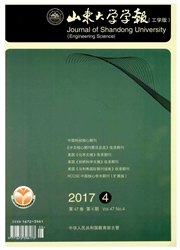

 中文摘要:
中文摘要:
为探究启发式边排序策略性能和网络结构特征的相关性,并建立网络结构特征依赖的边排序策略选择方法,基于4种常用的规则网络对BFS(breadth—firstsearch)和POS(priorityorderingsearch)两种策略的性能展开研究。通过试验分析比较了4种网络下BFS和POS两种策略的BDD(binarydecisiondiagram)尺度与总体运行时间等性能数据。研究结果表明:在规则网络结构中,不同的排序策略适用于不同的网络结构。在Torus和Square网络中BFS策略优于POS策略;在DeBruijn和Nearest—neighbor网络中POS策略普遍优于BFS策略。该结论为特定网络选取最优或次优启发式边排序策略提供了依据。
 英文摘要:
英文摘要:
In order to explore the correlation between edge ordering heuristics and characteristics of network structure, and to build the method of selecting heuristic relied on network structure, the performances of breadth-first search and priority ordering search were studied based on four kinds of regular network models. Some performance data, such as binary decision diagram size and runtime under two heuristics, were compared emphatically through the experiments. The experimental results showed that different ordering heuristics fitted different network structures: BFS was generally better than POS in the networks of Torus and Square, and POS was generally better than BFS in the De Bruijn and Nea- rest-neighbor networks. These results could provide reference for choosing the optimal or suboptimal edge ordering heu- ristic for the particular regular network.
 同期刊论文项目
同期刊论文项目
 同项目期刊论文
同项目期刊论文
 期刊信息
期刊信息
